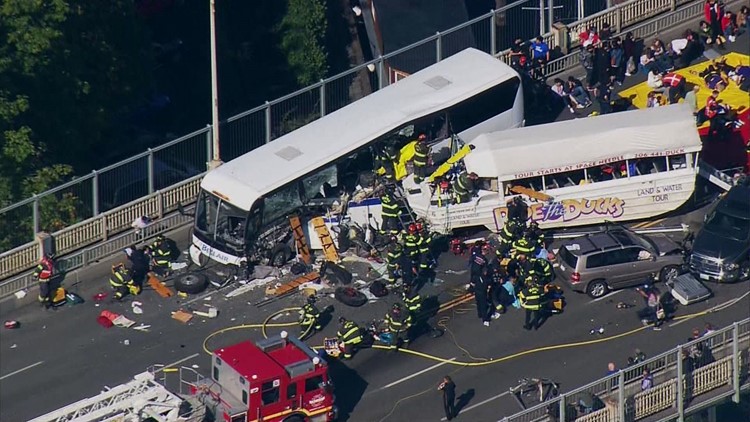More than three years ago a Ride the Ducks vehicle crashed into a tour bus on the Aurora bridge, killing five North Seattle College students and injuring dozens more. On Tuesday, opening statements began in the trial to determine who was at fault.
With a quacker around her neck and a cap on her head, plaintiff's attorney Karen Koehler took on the persona of the captain at the helm of the amphibious vehicle to begin the offbeat opening statement.
"It's September 24, 2015, and I'd like you to join us on a Duck Ride," Koehler told the jury.
That ride proved to be fatal.
"You can see them falling through the air onto the asphalt from the Duck," said Koehler.
Duck Captain Eric Bishop remembered losing control when the front axle of the vehicle broke.
"I just said 'oh no,'" said Bishop. "I tried to gain control of the Duck and I couldn't."
Forty-three plaintiffs are suing Ride the Ducks Seattle, Ride the Ducks International, the City of Seattle, and the state for damages. The City of Seattle settled 12 lawsuits with victims earlier this year, paying victims more than $2.3 million.
Each defendant tried to distance itself from the others, and the blame.
"Ride the Ducks Seattle hired their own employees, hired their own captain, hired their own tour guides, they hired their own maintenance people," said Jack Snyder, attorney for Ride the Ducks International.
"Even when maintenance does everything right, accidents can happen," said Patricia Buchanan, attorney for Ride the Ducks Seattle.
Plaintiffs will try to prove the bridge was unsafe, the Ducks were poorly maintained, and the wartime amphibious vehicles should never have been on the road.
The attorney representing Ride the Ducks Seattle said the trial is expected to last four to five months.
In April, a King County judge denied a motion from the City of Seattle looking to escape responsibility for the crash.
The City of Seattle argued that the State of Washington is responsible for putting a median barrier on the high traffic bridge. That barrier may have helped prevent the crash.
The state and the city both operate the bridge. The state owns the structure itself, and the city typically does traffic control work from the asphalt up. The city brought a motion against the state hoping the judge would find that the state is the only group responsible for putting a median barrier on the bridge. The judge denied the motion.



